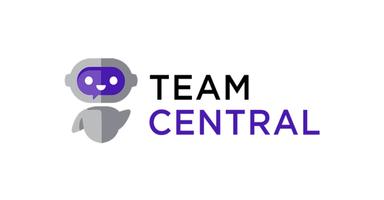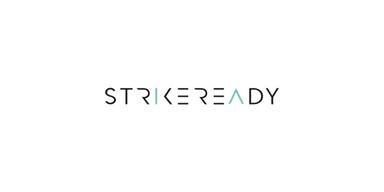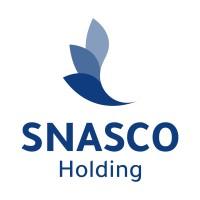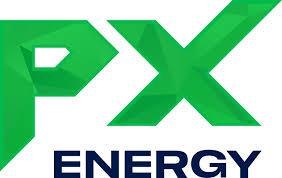Nasdaq vs Dow: Tech-Heavy vs Broad Economy Exposure Explained

Understanding the difference between the Nasdaq and the Dow Jones Industrial Average is crucial for anyone making investment decisions in 2025. These two indices represent fundamentally different approaches to tracking the U.S. stock market, and knowing which one aligns with your investment goals can dramatically affect your portfolio performance. While both serve as market benchmarks, they tell very different stories about what's happening in the American economy.
Nasdaq vs Dow: The Core Differences
The nasdaq vs dow debate essentially comes down to concentration versus diversification. The Nasdaq Composite is heavily weighted toward technology companies, making it the go-to benchmark for tech sector performance. The Dow Jones Industrial Average, by contrast, tracks 30 large companies across various industries, providing a broader snapshot of the traditional American economy. This fundamental difference means they often move in different directions, especially during periods when tech outperforms or underperforms the broader market.
The Nasdaq contains over 3,000 stocks, predominantly in technology, biotech, and growth sectors. Companies like Apple, Microsoft, Amazon, Nvidia, and Tesla carry substantial weight. The Dow, however, includes just 30 blue-chip companies spanning industrials, financials, healthcare, consumer goods, and yes, some technology. Think Boeing, Goldman Sachs, Johnson & Johnson, and Coca-Cola alongside Apple and Microsoft.
Key structural differences:
- Nasdaq: 3,000+ stocks, tech-heavy, market-cap weighted
- Dow: 30 stocks, sector-diverse, price-weighted
- Nasdaq: Growth and innovation focus
- Dow: Established companies and traditional economy
The weighting methodology matters too. The Nasdaq uses market capitalization weighting, meaning larger companies have more influence. The Dow uses price weighting, where higher-priced stocks carry more weight regardless of company size. This quirk means a stock split can dramatically change a company's influence on the Dow, while barely affecting its weight in the Nasdaq.
Performance Tells the Story
In 2024 and into 2025, the Nasdaq significantly outperformed the Dow, driven by the AI boom and semiconductor rally. Tech stocks surged as companies invested heavily in artificial intelligence infrastructure, cloud computing, and advanced chips. The Nasdaq captured this momentum directly because of its tech concentration.
The Dow, meanwhile, showed more modest gains. While it includes some tech giants, its heavy weighting in industrials, financials, and consumer staples meant it participated less directly in the AI-driven rally. When Boeing faces production issues or banking stocks lag, it drags on the Dow. When Nvidia soars on AI chip demand, it lifts the Nasdaq dramatically but barely moves the Dow needle.
What Each Index Really Represents
The Nasdaq represents innovation, growth, and the future economy. It's where disruptive companies trade, where IPOs often list, and where the next generation of dominant firms emerges. Investing in the Nasdaq means betting on technology continuing to transform industries and drive economic growth. It's higher risk and higher potential reward.
The Dow represents stability, established economic power, and the traditional corporate backbone. These are companies with decades of history, proven business models, and often generous dividends. The Dow tells you how America's industrial and financial core is performing. It's more conservative, more predictable, and historically less volatile.
What you're really buying:
- Nasdaq exposure = betting on tech dominance and innovation
- Dow exposure = diversified exposure to established American business
- Nasdaq = higher growth potential, higher volatility
- Dow = steadier returns, dividend income, lower volatility
Neither is inherently better. They serve different purposes and appeal to different investor profiles. Aggressive growth investors favor Nasdaq exposure. Conservative income investors often prefer the Dow's stability and dividend-paying components.
How 2025 Market Dynamics Affect Each
The AI revolution and semiconductor boom of 2025 dramatically benefited Nasdaq-heavy portfolios. With over 51% of venture capital flowing to AI projects and semiconductor stocks outperforming broader tech by 18%, the Nasdaq captured this momentum directly. Companies like Nvidia, AMD, and cloud infrastructure providers drove substantial gains.
The Dow participated in this rally through its tech components but was held back by struggles in other sectors. Industrial companies faced supply chain challenges. Financial stocks dealt with interest rate uncertainty. Consumer discretionary names saw mixed results as spending patterns shifted. This sector diversity that normally provides stability became a drag during a tech-dominated rally.
2025 sector performance impact:
- Tech and semiconductors: strongly favored Nasdaq
- AI infrastructure buildout: predominantly Nasdaq companies
- Traditional manufacturing: neutral to negative for Dow
- Financial services: mixed, affecting Dow more than Nasdaq
Looking ahead, if the AI boom continues, the Nasdaq likely maintains its performance edge. If the economy broadens and traditional sectors recover, the Dow could close the gap or even outperform as investors rotate from expensive tech into cheaper value stocks.
Which Index Matches Your Goals
Choosing between Nasdaq and Dow exposure depends on your investment timeline, risk tolerance, and economic outlook. Young investors with long time horizons often favor Nasdaq exposure, accepting higher volatility for higher growth potential. They can ride out tech sector downturns and benefit from long-term innovation trends.
Investors nearing retirement typically want more Dow exposure for its stability and income generation. The dividend-paying blue chips in the Dow provide steady cash flow and lower volatility, which matters when you're drawing on your portfolio for living expenses.
Investor profile matching:
- Aggressive growth seekers: heavy Nasdaq weighting
- Balanced investors: mix of both indices
- Conservative income focused: heavy Dow weighting
- Sector-specific conviction: choose based on economic outlook
Many investors don't choose one or the other exclusively. A balanced portfolio might include both Nasdaq and Dow exposure, capturing both innovation and stability. The right mix depends on personal circumstances, not universal rules.
The Bottom Line
The nasdaq vs dow comparison ultimately reflects a choice between concentration and diversification, growth and stability, future and present. The Nasdaq offers pure exposure to the sectors driving innovation and economic transformation. The Dow provides diversified exposure to established American business across multiple industries.
In 2025, with AI and semiconductors dominating market returns, Nasdaq exposure proved more rewarding. But markets rotate, sectors fall in and out of favor, and what outperforms today may underperform tomorrow. Understanding what each index represents helps you make informed decisions aligned with your goals rather than chasing recent performance.
Both indices serve important roles in investment portfolios. The key is knowing what you're buying, why you're buying it, and how it fits your overall strategy. The nasdaq vs dow debate isn't about which is better. It's about which is better for you, right now, given your circumstances and outlook. That's a question only you can answer, but understanding these fundamental differences gives you the knowledge to answer it wisely.
Business News
How Executives Can De-Risk Payment Operations in Regulated Industries
Why Your Engine Air Filter Plays a Bigger Role Than You Think
Phoebe Gates-Backed Startup Secures US$30 Million Investment to Fuel AI Shopping Platform
Anthropic’s AI Bubble Warning: A Call for Caution in the Hype-Driven Race
The Ultimate Guide to Backlink Packages and Guest Post Services: Supercharge Your SEO in 2025




















